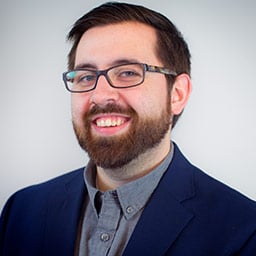5 Ways Rasmussen University ECE Students Are Equipped to Educate in a Diverse World
By Will Erstad on 03/26/2018

The beauty of living in America is the incredible mix of people and cultures—all with their own sets of values, traditions and norms—living in one place. Unfortunately, it’s become clear for many that the vision of America being a harmonious melting pot isn’t always true. There has been and will continue to be plenty of bumps along the way as different groups of people learn to coexist and ultimately thrive together. While it’s true that these differences can be a source of friction, many of these tensions are based on a fear of the unfamiliar. This is where teachers can step in.
One of the best ways to fight back against hate and the fear of those who are different is education. Teachers have a unique opportunity to break down barriers in the classroom and promote a respectful understanding of our differences and–perhaps more importantly–our similarities. That said, promoting cultural understanding and diverse viewpoints can be tricky, and even well-intended approaches can fail if you’re not equipped for the subject.
That’s where an education from Rasmussen University can help step in. We asked School of Education Dean Mary Muhs to help highlight the ways Rasmussen University Early Childhood Education students are prepared for teaching diverse classrooms and making a difference.
5 Ways our ECE program prepares students to be inclusive educators
At Rasmussen University, we believe in the power of education to help transform the future of our world. Learn more about how we equip educators to start instilling positive behaviors in the early childhood classroom.
1. Students are taught to look inward
One of the most important aspects of teaching diverse classrooms is a teacher’s ability to self-evaluate and be aware of biases they may possess.
“It’s important for us to examine and evaluate our own beliefs,” Muhs says. “Students are taught to ask themselves, ‘What do I need to know to make sure my interactions with families are supportive, non-judgmental and inclusive?’”
2. Rasmussen University students reflect the communities they’ll serve
There is no such thing as a “cookie cutter” Rasmussen University student. The mix of cultural backgrounds and experiences amongst the student body is a definite advantage for discussing and understanding different cultural issues and approaches to education.
“We have students who are fresh out of high school to grandparents—and a wide variety of cultural backgrounds,” Muhs explains. “This provides a wealth of both positive and negative experiences to share with each other.”
Muhs says instructors encourage students to bring their background and perspectives to the forefront in classroom discussion. “We don’t want automaton teachers,” she says. “We want students who can live and breathe what they’re teaching.”
3. Rasmussen University offers a course that focuses on working with diverse family structures
Take an inventory of the families you know. Sure, you’ll find some similarities. But there can be significant cultural and structural differences from family to family. That’s precisely why educators can’t approach working with families with a “one-size-fits-all” mentality.
Early Childhood Education students at Rasmussen University complete a course dedicated to learning about the historical changes in family structures as well as the major social issues modern families face.
“The idea is that we make sure our students ask questions of the families they’re working with—learning their backgrounds and traditions and if there are ways we can incorporate them naturally into the learning environment,” Muhs says.
4. Students can choose to specialize in educating children with unique needs
Students of all mental, emotional and physical capabilities deserve an enriching education, but not every teacher is equipped to meet the needs of these students. Students who pursue an Early Childhood Education Associate’s degree at Rasmussen University can choose a specialization track with coursework designed to equip them with the tools and skills needed to provide a quality education for students with special needs. These courses include: Introduction to English Language Learners, Advocating for Children with Special Needs and Curriculum for Children with Special Needs.
5. The ECE Bachelor’s degree includes coursework focused solely on diversity and social justice
The Early Childhood Education: Diversity and Social Justice course takes a deep dive into diversity and social justice issues within the United States and explains how these topics relate to inequality and caring for young children.
“This is a course that challenges students to question their own beliefs and pushes them to identify any biases they may have,” Muhs says.
Muhs says that relevant and sometimes difficult-to-navigate current events are discussed and, though challenging, students leave the course with a much broader prospective. “The course pushes students to tackle what may be uncomfortable topics in order to become better equipped as educators.”
Ready to make a difference?
There’s no magic wand we can wave to make everyone in the United States love and respect each other. Bridging cultural divides takes hard work built on a foundation of inclusive education.
If you’re ready to roll up your sleeves and become better equipped for taking on this monumental task, Rasmussen University’s Early Childhood Education programs will be ready and waiting for you.
Related Articles:




